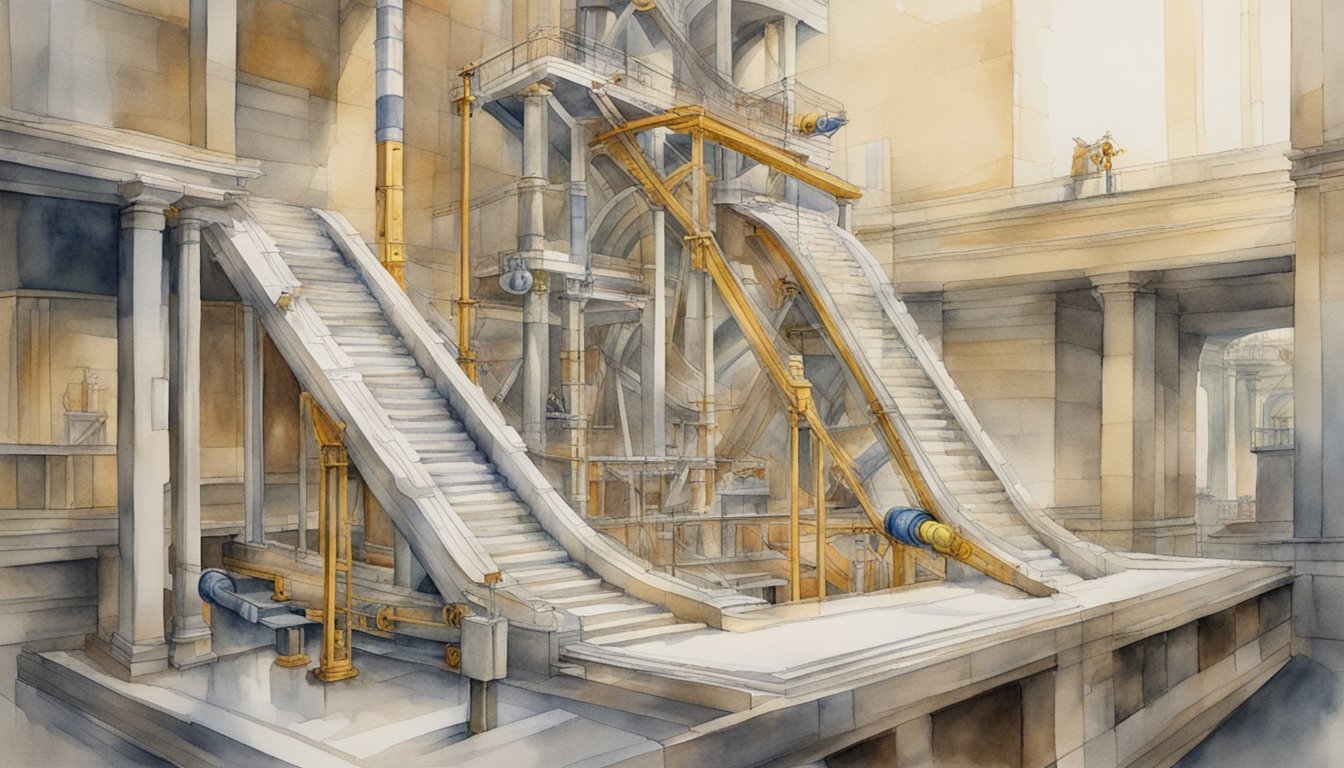The Life and Work of Rube Goldberg
Rube Goldberg’s life was a vivid tapestry of creativity, humor, and impact, woven through his career as a cartoonist and inventor. His work extended beyond the newspaper strips, leaving a lasting impression on culture and language.
Biographical Overview
Born on July 4, 1883, in San Francisco, Rube Goldberg was named Reuben Garret Lucius Goldberg. His early life in San Francisco set the stage for his later success. Goldberg’s education at the University of California, Berkeley, laid the groundwork for his engineering skills, which he famously inverted in his cartoons. Despite his qualifications, his passion for drawing and humor led him down the path of editorial cartooning rather than engineering.
Career Milestones
After college, Goldberg quickly found work as a cartoonist, initially with the San Francisco Chronicle and then the San Francisco Bulletin. He eventually moved to New York, where he joined the New York Evening Mail. His career spanned several decades, during which he created iconic comic strips that resonated with the American public. In 1948, Rube Goldberg was awarded the Pulitzer Prize for his political cartooning, affirming his status as a significant American cartoonist. His intricate drawings became so associated with overcomplicated mechanisms that his name itself became an adjective to describe such contraptions.
Influence in Popular Culture
Goldberg’s elaborate mechanical designs have inspired generations, eventually leading to the term “Rube Goldberg machine.” His influence in popular culture persists, with his contraptions being a recurrent theme in various media and the Rube Goldberg Machine Contest challenging students to create their complex gadgets. Additionally, his contribution to the arts was commemorated with a postage stamp in the United States, celebrating his “Self-Operating Napkin” invention. His work stands as a testament to satire and humor’s power in artistic expression.
Rube Goldberg Machines and Their Impact

Rube Goldberg Machines have cemented their place in both popular culture and educational fields as representations of creativity and complex problem-solving executed in the most intricate manner.
Definition and Characteristics
Rube Goldberg Machines are elaborate contraptions with a chain reaction flow, designed to perform simple tasks in very complex ways. They embody the term ‘convoluted’, often involving a series of devices that trigger one another, resulting in a domino effect. The machines are named after the cartoonist Rube Goldberg, who depicted whimsical inventions, like the self-operating napkin, created by his fictional character, Professor Lucifer Gorgonzola Butts.
Rube Goldberg Machine Contests
Competitions, such as the Rube Goldberg Machine Contest, began at Purdue University and have expanded globally. Participants are challenged to design and build ingenious machines that are judged on creativity, functionality, and adherence to the theme of transforming a simple task into something complex and humorous.
Educational Value
In an educational context, Rube Goldberg Machines serve as a practical application of STEM principles. These machines provide a unique approach to learning—encouraging students to engage with science and engineering concepts through building and observing physical demonstrations of mechanics, physics, and cause-and-effect relationships.
Inventions and Technology
While Goldberg’s inventions were not meant to be taken seriously, the underlying concepts have influenced modern technology. By necessitating a thought process that considers interconnectedness and sequence, such inventions promote innovation. They’ve also made extensive appearances in media, from Tom and Jerry to The Goonies, exemplifying the lasting impact Goldberg has on shaping creative gadgets and technologies.

